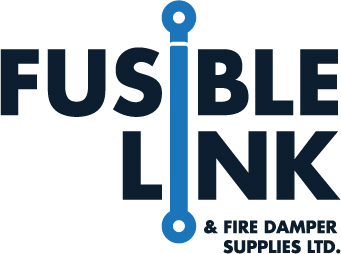Contents
1. Definition
A fusible plug is a threaded or flanged fitting that incorporates a fusible alloy core. At a calibrated temperature, the alloy melts to create an opening or release that relieves pressure or stops dangerous overheating. Unlike electronic sensors, a fusible plug operates purely by thermal response and does not require power.
Key point: Fusible plugs are designed to protect against abnormal temperature rise—for example, low‑water conditions in boilers or external fire exposure on cylinders.
2. Purpose and Safety Function
Fusible plugs provide a last‑line thermal safety response in two broad scenarios:
- Boilers and heaters: The plug melts when metal temperature rises abnormally (e.g., due to low water), allowing steam/water to escape and alerting operators while damping the heat source.
- Pressure vessels and gas cylinders: The plug forms part of a pressure relief device (PRD); when exposed to fire or extreme heat, the alloy melts and vents the contents in a controlled manner to reduce rupture risk.
3. How a Fusible Plug Works
The plug body is machined from brass, bronze, or steel and contains a low‑melting‑point alloy core. Under normal temperatures the alloy seals the orifice. At the rated temperature, the alloy softens or liquefies and the sealed passage opens. In boiler applications this creates a noticeable discharge to warn operators and quench heat; in cylinder PRDs it provides a vent path to prevent catastrophic failure.
4. Common Types and Applications
| Type | Primary use | Typical behaviour on melt | Notes |
|---|---|---|---|
| Boiler fusible plug | Steam boilers, heaters | Alloy melts and opens a port; steam/water discharge alerts operators and reduces furnace heat. | Often located at or near the crown sheet/waterside; helps indicate low‑water hazard. |
| Fusible‑alloy PRD (cylinder plug or disc) | Compressed gas cylinders, pressure vessels | Alloy melts under external heat; contents vent through the device to avoid vessel rupture. | Used with LPG, refrigerants, and other gases following relevant transport/pressure codes. |
5. Selection and Ratings
Correct selection ensures reliable operation. Consider:
- Temperature rating: Choose a rating specified by the equipment or code. Ratings are manufacturer‑set and tied to the alloy used.
- Pressure/flow capacity: For PRDs, verify adequate relief capacity and compatibility with the medium.
- Material compatibility: Body and seal materials must suit the service fluid and environment (e.g., corrosion resistance).
- Thread/connection: Match process connection type, size, and any sealing requirements.
- Certification and marking: Ensure devices are marked/listed per applicable standards and legal requirements.
6. Standards and Compliance
Applicable standards depend on the application and jurisdiction. Common references include:
- ASME Boiler & Pressure Vessel Code (boiler construction and safety provisions)
- BS 1123 (historical British standard for boiler fusible plugs)
- NFPA 58 (LP‑Gas Code) and related NFPA standards
- CGA S‑1 series (Compressed Gas Association standards for cylinder relief devices)
- EN/ISO PRD standards relevant to pressure relief devices and transport cylinders
Compliance note: Selection, installation, and replacement must follow the equipment manufacturer’s instructions and the governing codes for your region.
7. Installation, Inspection, and Replacement
- Install using correct torque and thread sealants approved for the service.
- Ensure required orientation and placement (e.g., waterside exposure for boiler plugs).
- Inspect at intervals defined by code or manufacturer; look for corrosion, contamination, or damage.
- Replace any device that is aged, contaminated, or has seen abnormal heat exposure—even if it has not vented.
- Never paint or coat a fusible plug; coatings can delay heat transfer and impair operation.
8. Frequently Asked Questions
Is a fusible plug the same as a fusible link?
No. A fusible link releases a mechanical action (e.g., closing a damper). A fusible plug opens a passage when its alloy melts, typically to relieve pressure or indicate overheating.
What temperature ratings are available?
Manufacturers offer a range of calibrated temperatures. The correct rating is determined by the governing code and equipment specification—always consult the datasheet and standards.
Can I test a fusible plug in place?
Do not apply external heat to test. Follow the manufacturer’s test/inspection procedures and replace any doubtful devices.
9. References
- ASME Boiler and Pressure Vessel Code
- BS 1123 — Fusible Plugs for Steam Boilers (historical reference)
- NFPA 58 — Liquefied Petroleum Gas Code
- CGA S‑1.x series — Pressure Relief Device Standards for Compressed Gas Cylinders
- Relevant EN/ISO standards for pressure relief devices
